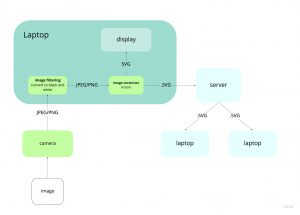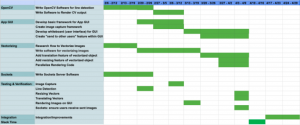This week I worked on researching different .SVG converters since we decided to move our vectorization process into the software side in order to avoid having to compare different frames with a temporal approach. The two main methods I looked into were using Potrace and Vtracer. In the end we decided to go with Vtracer since it works with colored .PNG files as well and has better image fidelity; meaning that the .SVG resembles the image more accurately.
I also designed a mock up of our GUI in Figma and discussed with Ronald what features/buttons we should add for better user interactions.
GUI: https://www.figma.com/file/iI5Mw8cfi4QE14hJeFnFHg/DrawBuddy-GUI?node-id=0%3A1
I worked on putting together a design proposal presentation and focused on the use-case, use-case requirements, and system approach/implementation plan.
https://docs.google.com/presentation/d/14MaQNsqbtGYA0_ZN-x0DoQWcdriZ-3-VRN1r-oDmobM/edit?usp=sharing


